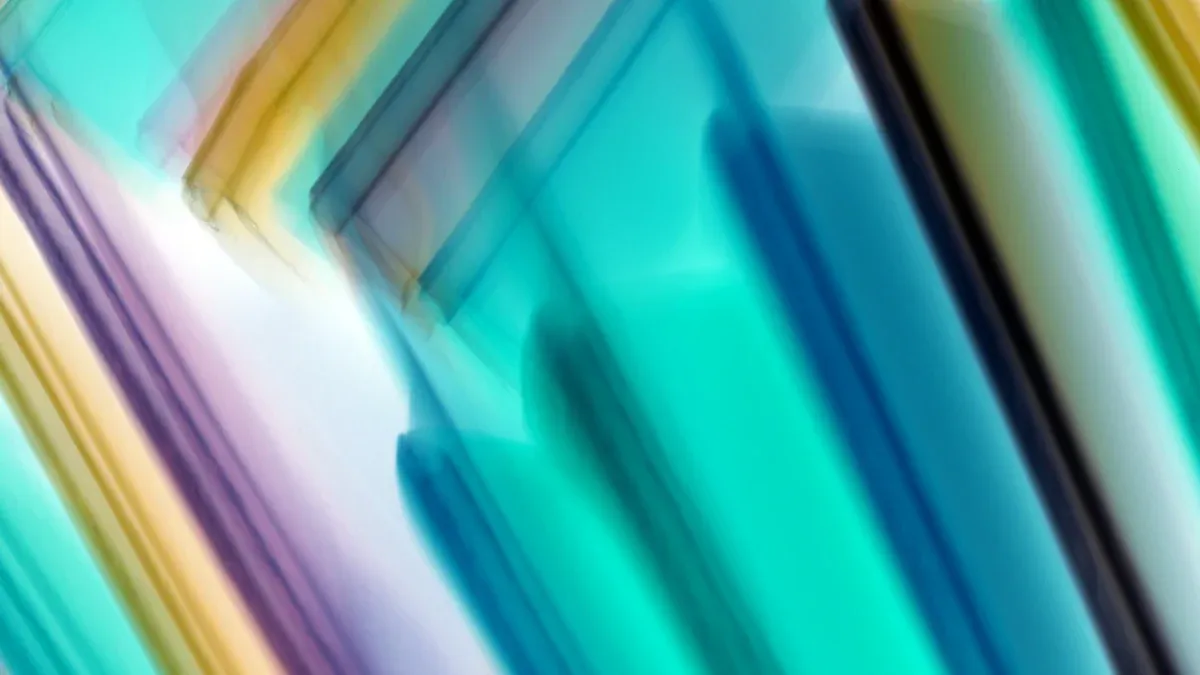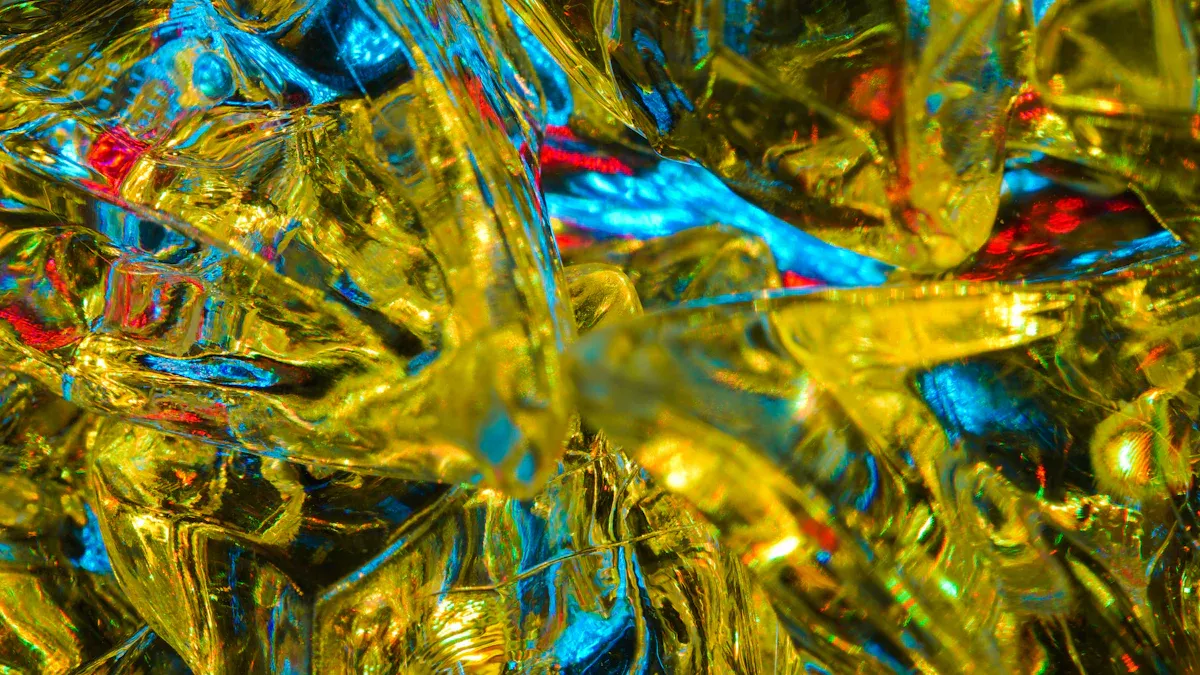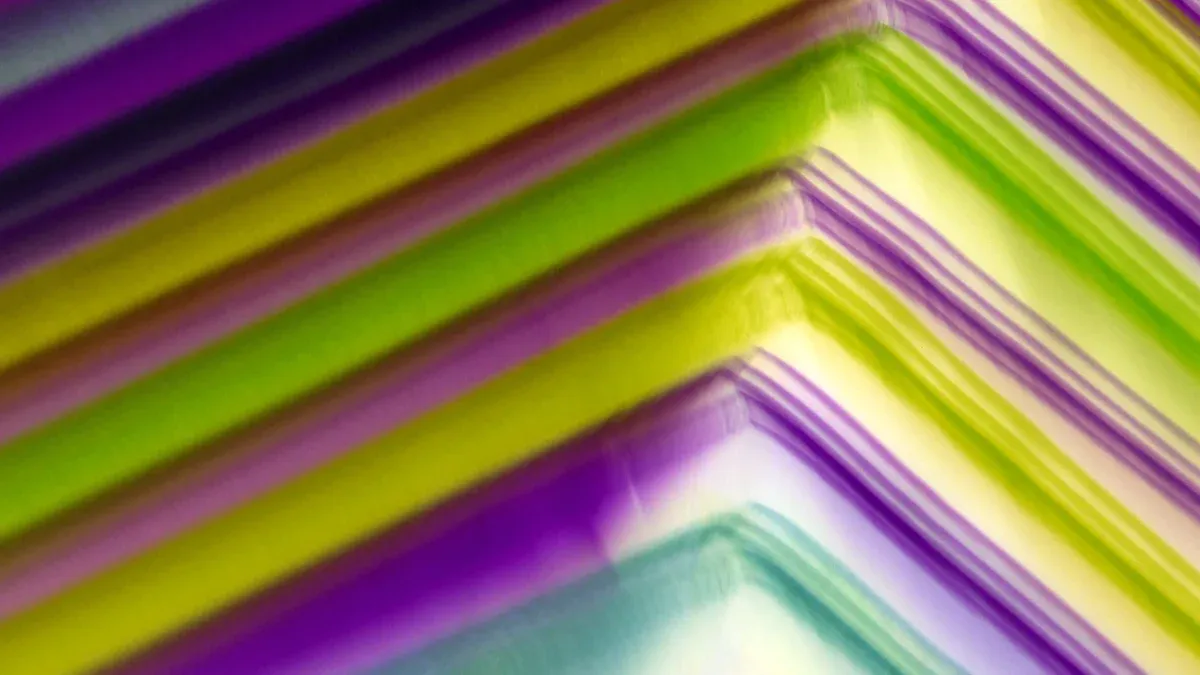How Acrylic Enhances Light Distribution in 2025

Acrylic Technology in 2025 transforms our perception of light. It disperses light 7-8 times more effectively than glass, resulting in brighter and more uniform spaces. For instance, a 30 cm acrylic panel produces 586.7 lux, which is three times the output of a 20 cm panel. Thicker acrylic panels enhance light intensity even further, doubling the brightness as their thickness increases. Acrylic is prominently featured in products like the acrylic LED photo frame light box and LED advertising light box, providing clear and efficient illumination.
Key Takeaways
Acrylic spreads light 7-8 times better than glass. It makes areas brighter and more welcoming.
Thicker acrylic sheets make spaces much brighter. A 20 mm thickness works best for most uses.
Acrylic is strong and resists UV rays. This makes it great for indoor and outdoor lights.
The Science Behind Acrylic Technology
Properties of Light Diffusing Acrylic Sheets
In 2025, acrylic technology changes how light works with materials. Light diffusing acrylic sheets are special because they let light pass through easily and stay clear. These sheets spread light evenly, so there’s no harsh glare. Unlike older materials, acrylic is strong, lasts long, and handles UV rays well. This makes it great for both indoor and outdoor use.
Science supports how well these sheets work. For example, PMMA panels, a type of acrylic, can resist UV damage for up to 30 years. They also fit well with building materials, keeping spaces bright while reducing heat. Acrylic diffusion plates are especially useful for daylighting, cutting glare and improving light quality.
Evidence Description | Key Points |
|---|---|
Optical Properties of Acrylic | Strong light bending, spreads light well, and lasts long |
Applications in Daylighting | Cuts glare, works with materials, and keeps spaces cooler |
Advantages of PMMA Panels | UV protection, good light use, and easy to apply |
How Acrylic Manipulates and Distributes Light
Acrylic bends and spreads light because of its special optical traits. It uses light-bending rules to send light through efficiently. This helps acrylic spread brightness evenly in rooms. For example, a 30 cm acrylic panel gives 586.7 lux, much more than glass.
The thickness of acrylic matters too. Thicker panels give even more light. Doubling the thickness more than doubles the brightness. Even a 20 mm thick panel works well for most uses. The way the panel is placed doesn’t change much, so it’s flexible for designs.
Acrylic helps LED lights work their best. Tests show acrylic panels keep light steady all day. This makes modern lighting systems better and is why architects and designers like using acrylic.
Acrylic spreads light 7-8 times better than glass.
A 30 cm panel gives three times more light than a 20 cm one.
Thicker panels are brighter, with 20 mm being a good starting point.
Applications of Acrylic Lights in Modern Lighting

Architectural Lighting with Acrylic
Acrylic lights are key in modern building designs. They are used in offices, homes, and public areas to give steady light and look stylish. Acrylic allows lots of light to pass through, keeping spaces bright without being too harsh. Studies by Callow and Shao showed that acrylic light rods send both direct and soft light well. These rods work the same no matter the sun’s position or weather, giving steady brightness all day.
Acrylic sheets are also important for daylighting systems. They spread light evenly and cut down on glare. This makes them great for energy-saving spaces that use natural light. Because they are strong and clear, architects like using acrylic to mix good looks with usefulness.
Automotive and Transportation Acrylic Lamps
Acrylic lamps are changing how cars and vehicles are lit. They are bright and tough, making them perfect for headlights, taillights, and inside lights. Acrylic lets light shine through clearly, making vehicle lights work well and look good. New LED technology has made acrylic lamps even better, allowing cool designs and safer lighting.
PMMA diffusion plates are very useful in vehicle lighting. They spread light evenly, making sure it’s not too bright or dim. From car headlights to airplane cabin lights, acrylic lamps give steady light and save energy. This makes them a smart and eco-friendly choice for today’s vehicles.
Acrylic in Consumer Electronics and Smart Lighting
Acrylic has changed gadgets and smart lighting systems. You see it in phones, tablets, and TVs, where acrylic screens are clear and don’t scratch easily. These features make devices look better and last longer.
In smart lighting, acrylic is important for making systems that adjust and save energy. It works well with LED lights to give steady light at home or work. Acrylic spreads light evenly, making smart lighting both useful and cozy. As people want more energy-saving options, acrylic stays a big part of modern lighting.
Innovations in Acrylic Technology for 2025

Advanced Coatings for Acrylic Lights
In 2025, new coatings make acrylic lights work better. These coatings help light move through acrylic more easily. Reflective films improve light efficiency by about 3%. Using a 98% reflective film boosts brightness by 7%. This means lights are brighter and more even without extra energy.
The coatings also protect acrylic from scratches and UV rays. This keeps the acrylic clear and strong for a long time. Because of this, acrylic lights are great for both indoor and outdoor use. Some tests with mirror-like panels showed small improvements. But overall, coating technology keeps making acrylic lights better.
These coatings combine good light performance with strength. This makes acrylic lights a top pick for modern lighting needs.
Sustainable Solutions in Acrylic Lamps
Sustainability is important for acrylic in 2025. Companies now make bio-based acrylic from renewable materials. These eco-friendly sheets attract people who care about the planet. They also help lower the carbon footprint of acrylic products. The demand for bio-based acrylic is growing fast.
Acrylic panels let more light through than glass. A 20 mm thick acrylic plate can give 3493.3 lux in daylight. This makes acrylic lamps perfect for systems that save energy by using sunlight.
The acrylic market is expected to grow from $29.11 billion in 2024 to $31.38 billion in 2025. This growth is due to the need for lightweight and eco-friendly materials. Acrylic lamps are a great choice for performance, efficiency, and helping the environment.
In 2025, acrylic changes how we see and use light. Its improved materials make lighting better in many areas. For instance, a 30 cm acrylic panel gives 586.7 lux, which is triple the light of a 20 cm panel. Acrylic lamps brighten tunnels, underground areas, and artificial systems, providing steady light and being eco-friendly.
FAQ
Why is acrylic better than glass for spreading light?
Acrylic spreads light much better than glass. It is clearer, stronger, and more flexible, making it great for modern lighting.
Can acrylic lights handle outdoor weather?
Yes, acrylic lights can handle UV rays and bad weather. They stay clear and strong for a long time, working well indoors and outdoors.
Are acrylic lamps good for the environment?
Some acrylic lamps are made from eco-friendly materials. These options help the planet and still spread light well while saving energy. 🌱
See Also
Energy-Saving Acrylic Box Lights For Contemporary Environments
Exploring Acrylic Light Box Uses, Advantages, And Choosing Tips
The Brilliance Of Personalized Acrylic Light Box Letters

